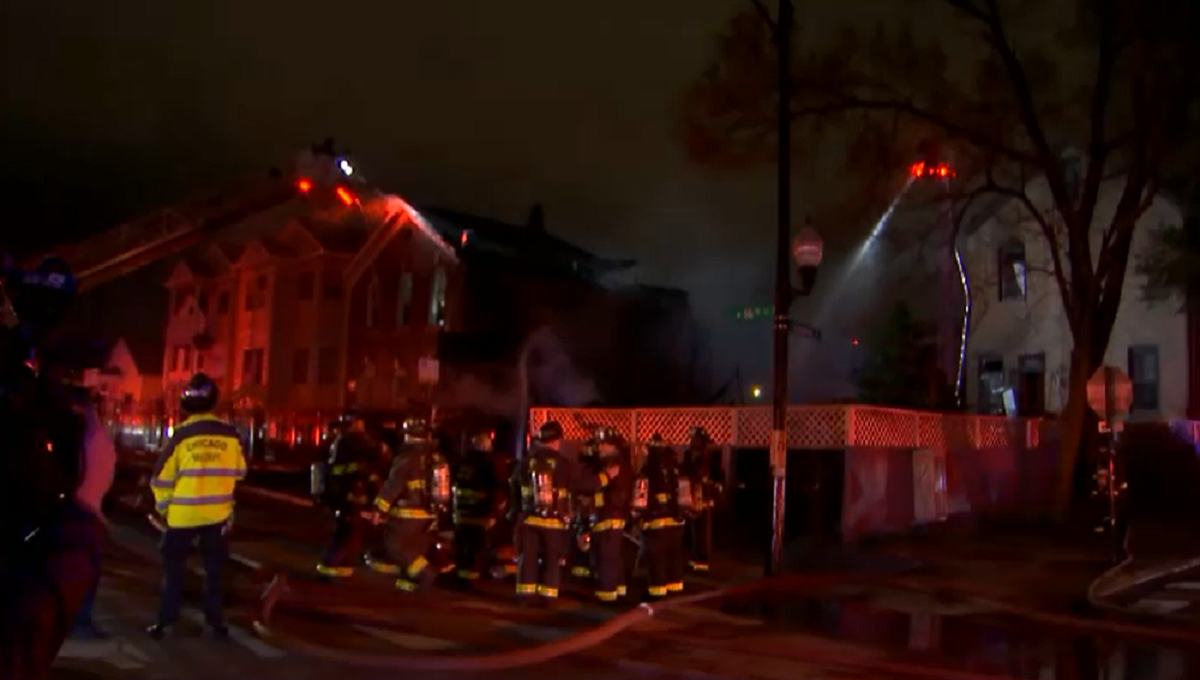On Monday, after still another violent weekend in Chicago, police Supt. David Brown once again pointed a finger at the home release of some accused offenders from Cook County Jail.
"We must keep violent offenders in jail longer," Brown said. "We should revamp the electronic monitoring program. It's clearly not working."
It's a charge Brown had made numerous times in the past. But it's also a point on which the new superintendent and Sheriff Tom Dart firmly disagree.
"The recent shootings I've looked at, we have no evidence of anyone on our home monitoring program being involved with it," Dart said. "When people are blaming us in any form or fashion, boy oh boy, are they looking at the wrong person!"
Asked by NBC 5 to cite examples to support the police superintendent's allegations, CPD pointed to only one case: an 18-year-old man charged with armed robbery, who was out on home monitoring and arrested on June 12 on charges including attempted murder.
Dart said he agrees that the electronic monitoring (EM) program has been expanded to include far-too-violent offenses, something he said he opposed and lost to a lawsuit a few years ago.
"I've told people from the get-go, that dangerous people need to be in jails with no caveat, meaning well, if things are a little dicey we need to let some of them go," he said. "No--you can't do that!"
Local
But, that said, the sheriff bristled at suggestions that the program is fueling a recent surge in violence in Chicago.
"I don't pick anyone to go on home monitoring," Dart said. "I pick no one. I get people sent to me to go on home monitoring, and I make clear that the program is something more suited for non-violent offenders. And it's as if I'm talking to myself!"
The release of offenders has only accelerated due to the need to de-crowd the jail during the coronavirus pandemic. And this week's EM population reveals just how open the program has become.
As of July 6, the EM program encompassed 3,322 individuals. Those on electronic monitoring included 43 accused of murder and 39 charged with attempted murder.
Another 500 individuals were charged with aggravated unlawful use of a weapon, 176 accused of aggravated battery, 172 charged as armed habitual criminals, 66 accused of criminal sexual assault and 46 charged with armed violence.
"When bail reform occurred, all of a sudden I had people sent to me to go on these programs that we had never seen before," Dart told NBC 5. "This is not the kind of people you want to see on home monitoring."
In that respect, it almost sounds like the sheriff and police superintendent are on the same page.
"I've agreed with him from the get-go, because I've said it now for two to three years, that people charged with violent offenses should not be on home monitoring," Dart said. "But when the superintendent says no one is watching, well that's just not true!"
Indeed, Dart noted that his is one of several EM programs. He said others in the Chicago area don't monitor 24 hours a day, but his office does. Plus, he insists his office has worked recently to expand use of GPS bracelets to track any potential criminals outside their homes. Traditional EM programs only are capable of alerting authorities when someone leaves their home. And he said his staffers have been working on new innovations to compare the tracks of accused offenders with crime in Chicago's neighborhoods.
"We take the GPS path of individuals, and then we overlay crimes over it, to see if any people that we have on GPS were at the scene of a crime, near the scene of a crime," he said. "We've taken them to a whole new level."
The need to reduce crowding in the jail only added to the EM rolls. In the process, the sheriff's office reopened eight buildings in the sprawling jail complex. Detainees are now housed only one per cell. All new arrivals are tested and held out of the general population for 14 days. Then they are tested again.
And that appears to be working. This week, the jail population included just 12 individuals testing positive for COVID-19. But Dart said he still believes putting offenders accused of violent crimes on the street was the wrong remedy.
"Did electronic monitoring help reduce the population---it did," Dart said. "But if the trade-off was ever going to be put to me, would you rather reduce the population or would you rather endanger the community more, it's not even a close call. We'll just have to figure another strategy to deal with COVID here, but you can't put people out there who are going to hurt people!"



